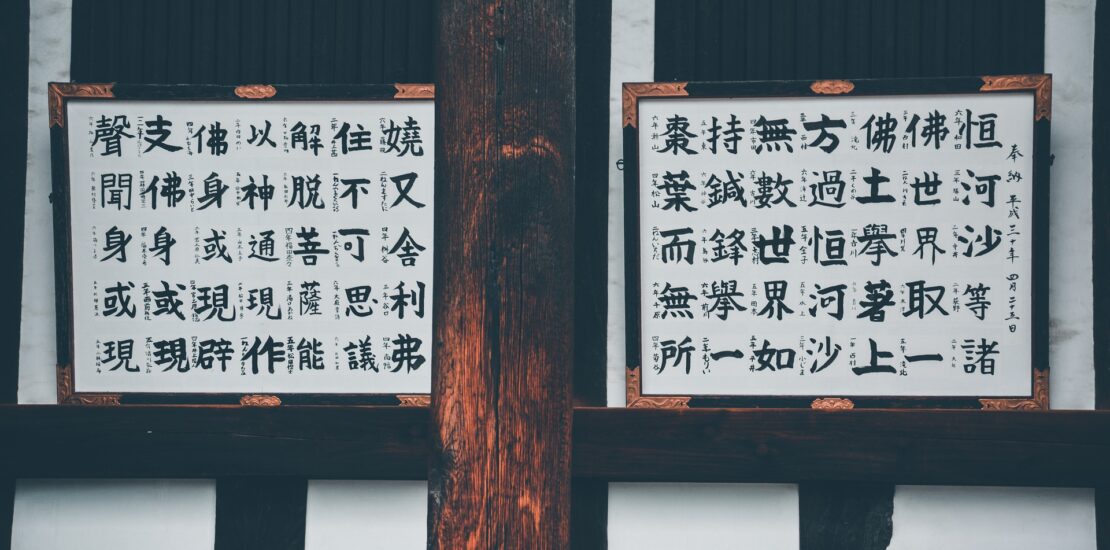The JLPT is a valuable accreditation for anyone looking to find work in Japan. Today we are going to look at methods that will give you confidence in your study, and ultimately an accreditation!

The Japanese Language Proficiency Test, or JLPT as it is more commonly referred to, is a valuable accreditation for anyone looking to find work in Japan. Many job postings will list it as a requirement, service industry often requiring an N3 minimum, and professional jobs requiring N2. N1 is more reserved for jobs in the translation, interpretation and writing industries. Achieving these levels of Japanese proficiency is no simple task, and will require you to put in serious hours of study. The official numbers given by the accreditors are given as;
| JLPT Study Hour Comparison Data 2010-2015 | |
|---|---|
| Level | |
| N1 | 3000 ~ 4800 hours |
| N2 | 1600 ~ 2800 hours |
| N3 | 950 ~ 1700 hours |
| N4 | 575 ~ 1000 hours |
| N5 | 325 ~ 600 hours |
With this in mind, it makes sense to study efficiently and in accordance with methods that are proven to work. Today we are going to look at methods that myself and many others have found to do just that, in order to give you confidence and ultimately a JLPT accreditation!
An overview of the test
The JLPT test consists of a “Language Knowledge” section, which tests vocabulary and grammar, a reading section, and finally a listening section. In accordance with this there are four areas of study. Let’s take a look at each individually.
Vocabulary
Arguable the most time consuming part of learning a language, you will need to build up a vocabulary. One of the most efficient methods is to employ a “spaced repetition” learning system. This system employs a mathematical formula to essentially repeat information at varying intervals, depending on the individual’s ability to retain each individual data.
Fortunately, a wonderful software exists called “Anki”, which relieves you of the burden of having to understand how it is working. Anki can be found on its website, as well as on the Android and IOS stores.
In order to actually use Anki, users will need to build up flash cards, or alternatively find and download cards other students of the Japanese language have made. Shared decks can be found by visiting ankiweb.net/shared/decks, and making a search such as “N2 vocab”.
Whilst textbooks are not as important for vocab as other areas of study like grammar and reading skills, they can help you to know what words need to be studied. Shared Anki decks will help you with this also, but if you prefer to build your own deck, a text book will be useful.
Grammar
Grammar requires a more scientific understanding than vocabulary, and therefore Anki alone is not the best way to study it. A good textbook which includes example sentences is the best way to learn grammar for the JLPT. The sentence will help you remember the meaning, because grammar can be a little less directly translatable than individual words. After you have learnt and understood these grammar patterns, Anki can be employed to help burn them into long term memory.
Beginner level (N5-3) books that are popular with students include the Genki series. For N3 and N2 I personally found the “Sou Matome” series highly helpful, due to the daily system. “Tobira” has better explanations, if you prefer a more concise understanding.
Reading
During the JLPT test, one of your biggest threats will be the time limit. It is therefore very import to study not only the characters which you will need to learn, but also the ability to read them at speed. Save some material for reading with a time limit, and see if you can complete and understand the text within a set time limit. One of the largest causes of failure is people spending too much time on the reading sections and not being able to answer all the questions.
In terms of actual study techniques, Anki can help you memorize individual characters, but reading is a skill which is only mastered through more and more reading. Never underestimate how much reading you should be doing in preparation for the test! The good news is that reading itself is an affective study for vocab and grammar as well, so don’t be afraid to dedicate a lot of your time to simply reading.
Finding sources of material to read is the biggest challenge. Wild sources (material intended for native speakers) are often too challenging, or can contain colloquialisms and grammar structures above your grade. If you want to become fluent in Japanese such sources are invaluable, but they can be a distraction when studying for the test. You should stick to material created for students, aimed at your reading level. There is a wealth of textbooks available, as well as sources on the internet. The key word to find such textbooks is “Dokkai”. For example, search for “JLPT N2 dokkai”. Sou Matome has a series, but I found the texts to be a little bit too short. Tobira has good long articles, which are valuable to train your focus.
The Heisig method
A popular method for learning and, more importantly, remembering kanji is the Heisig method. This method of learning kanji works by logically building knowledge into new knowledge, and therefore does away with learning the kanji in the more random order that fits with the JLPT levels. Therefore, if you choose to use the Heisig method, be aware that you will need to study kanji in traditional methods alongside it, which is probably not very efficient.
If you are in no great rush with learning Japanese, it can be greatly beneficial to study and complete Heisig before you tackle kanji in the traditional methods, and start thinking about tests.

Listening
The listening section of the JLPT test requires listening to an audio tape twice, and answering questions. Naturally the questions themselves are in Japanese, so your reading skills are still important. The best way to prepare for this is to drill, drill, drill! After you have done that, drill some more! The type of language employed here can consist of language that you will not hear in your daily life, and thus exercises are the only place to practice.
During the test, a good way to catch the important information is to listen for conjunctions. Words such as でも, その後し, かし, それから etc. usually indicate something important is going to follow. While the test doesn’t try to trip you up, these conjunctions can often change the direction of the information.
A passing score
The good news is that to achieve a passing score on the JLPT test, you only need to score a set amount out of the total points. Note that you both need to clear the pass mark hurdle, as well as the hurdle for each sections. If you achieve 100 points overall for the N3 test, but in your listening section only 18 points, you still fail.
| Level | Pass Mark | Language | Reading | Listening |
|---|---|---|---|---|
| N1 | 100 points | 19 points | 19 points | 19 points |
| N2 | 90 points | 19 points | 19 points | 19 points |
| N3 | 95 points | 19 points | 19 points | 19 points |
| N4 | 90 points | 38 points | 19 points | |
| N5 | 80 points | 38 points | 19 points |
A very important step, don’t skip it!
One of the biggest challenges in the JLPT test is the time limit. You absolutely should practice timings by doing mock tests with a stop watch. This practice will be valuable to you in a few ways:
- You will get a feel for the listening section.
- You will become aware of the required tempo.
- You will identify weak areas.
The most important of the three is understanding the tempo. There is a great deal of material covered by the JLPT test. Skim reading and making use of the reading time is paramount. Do not skip this step! You can find some past years exam questions on the official site of the JLPT test here.
Good luck with the test!



